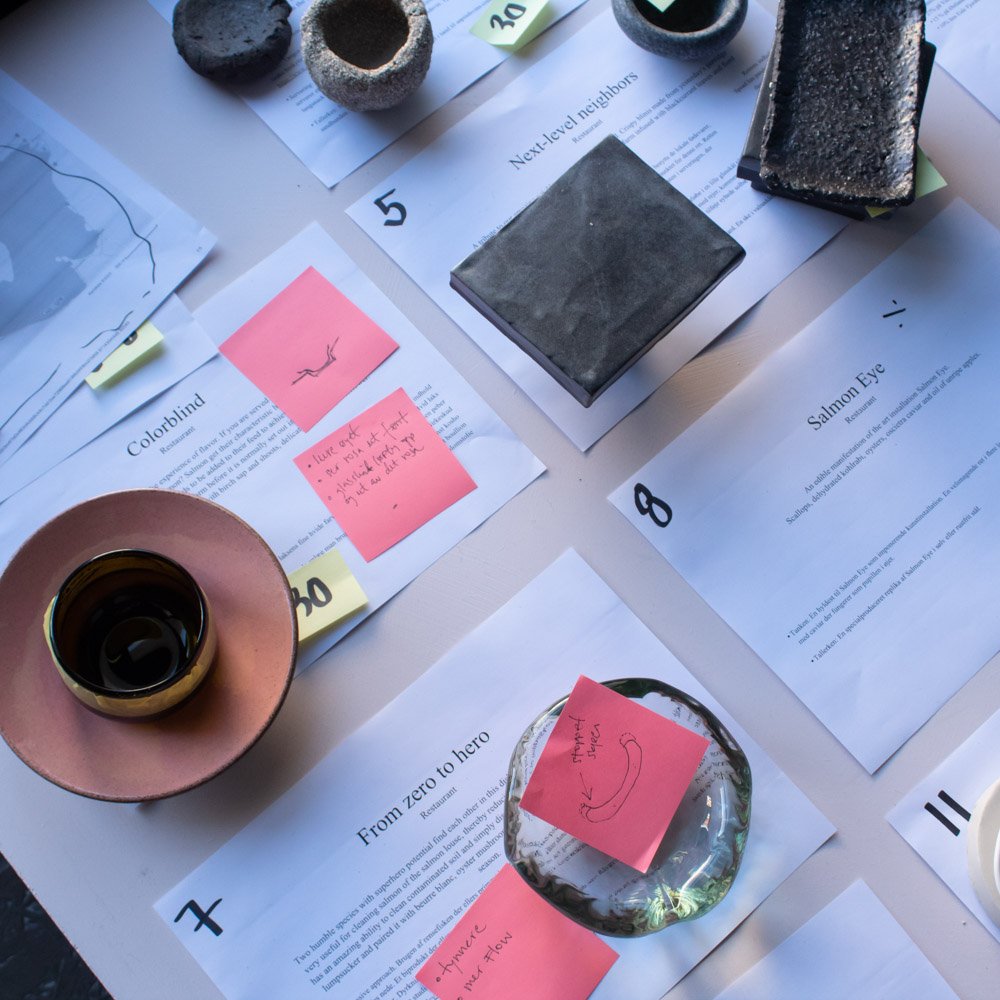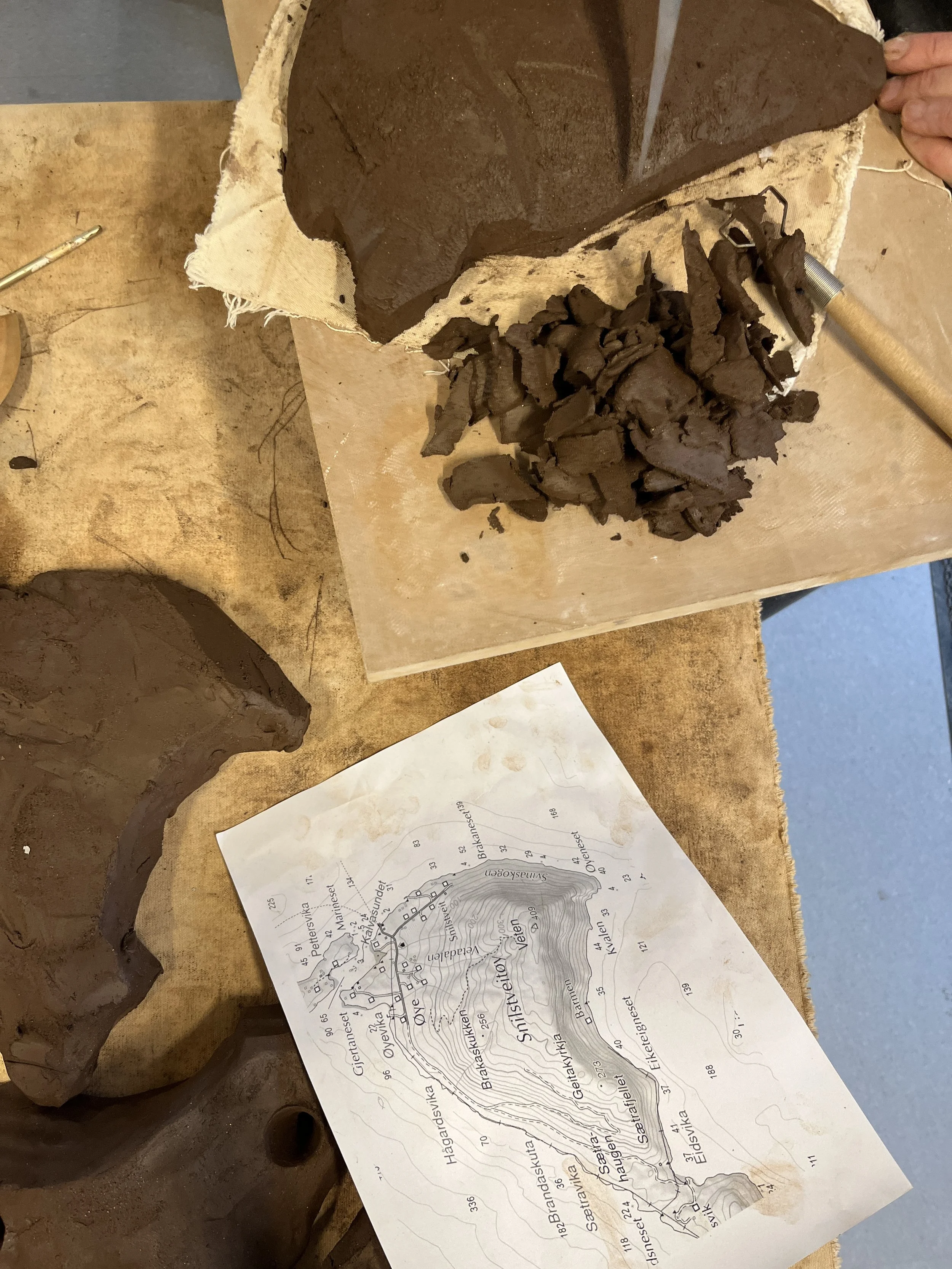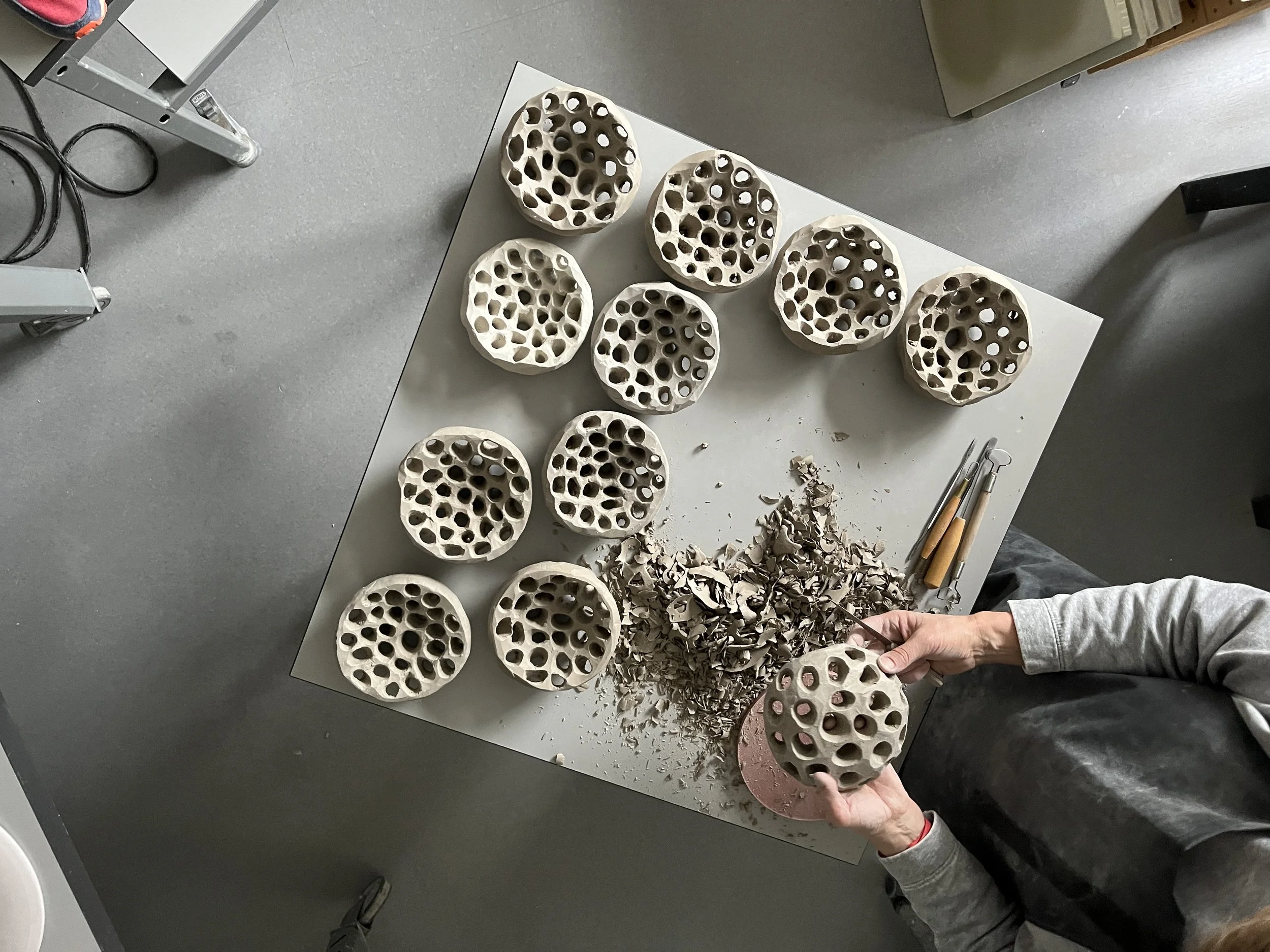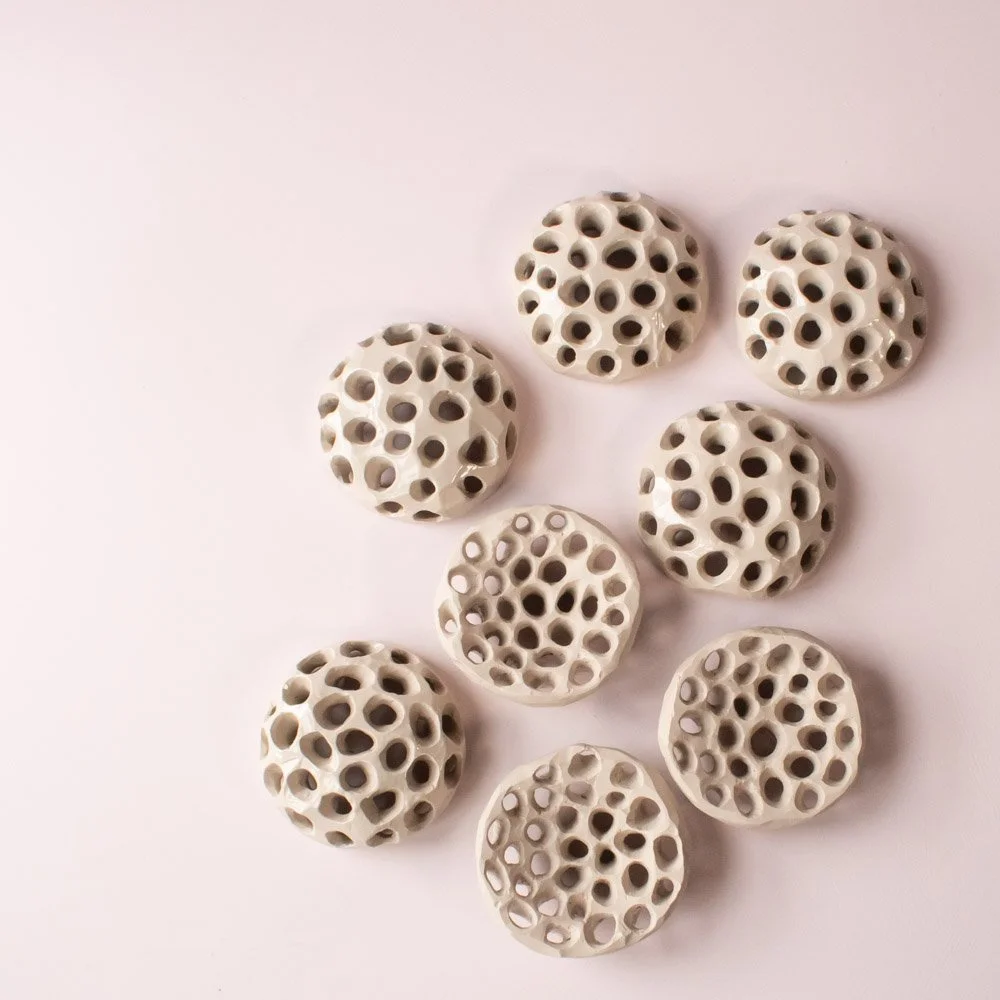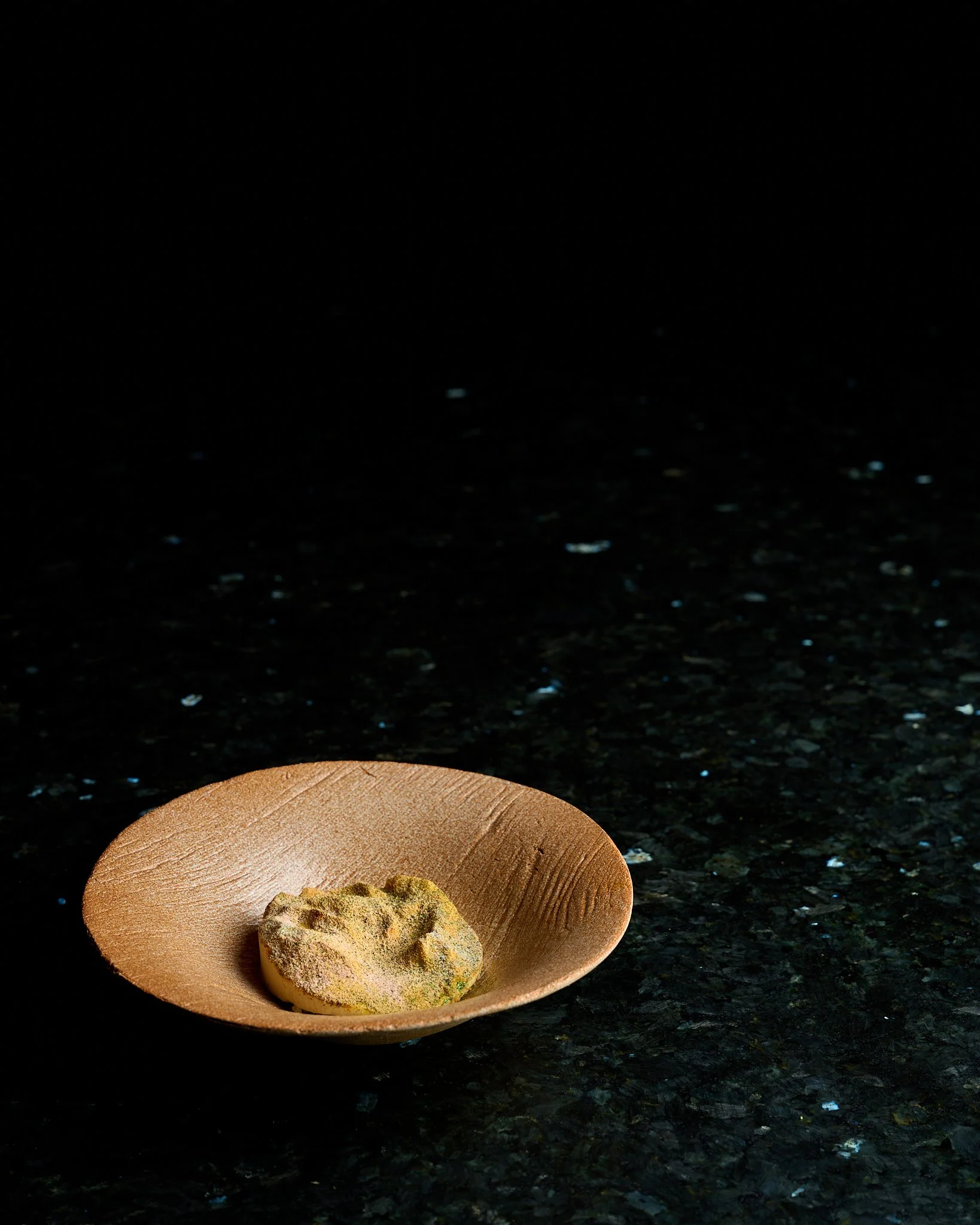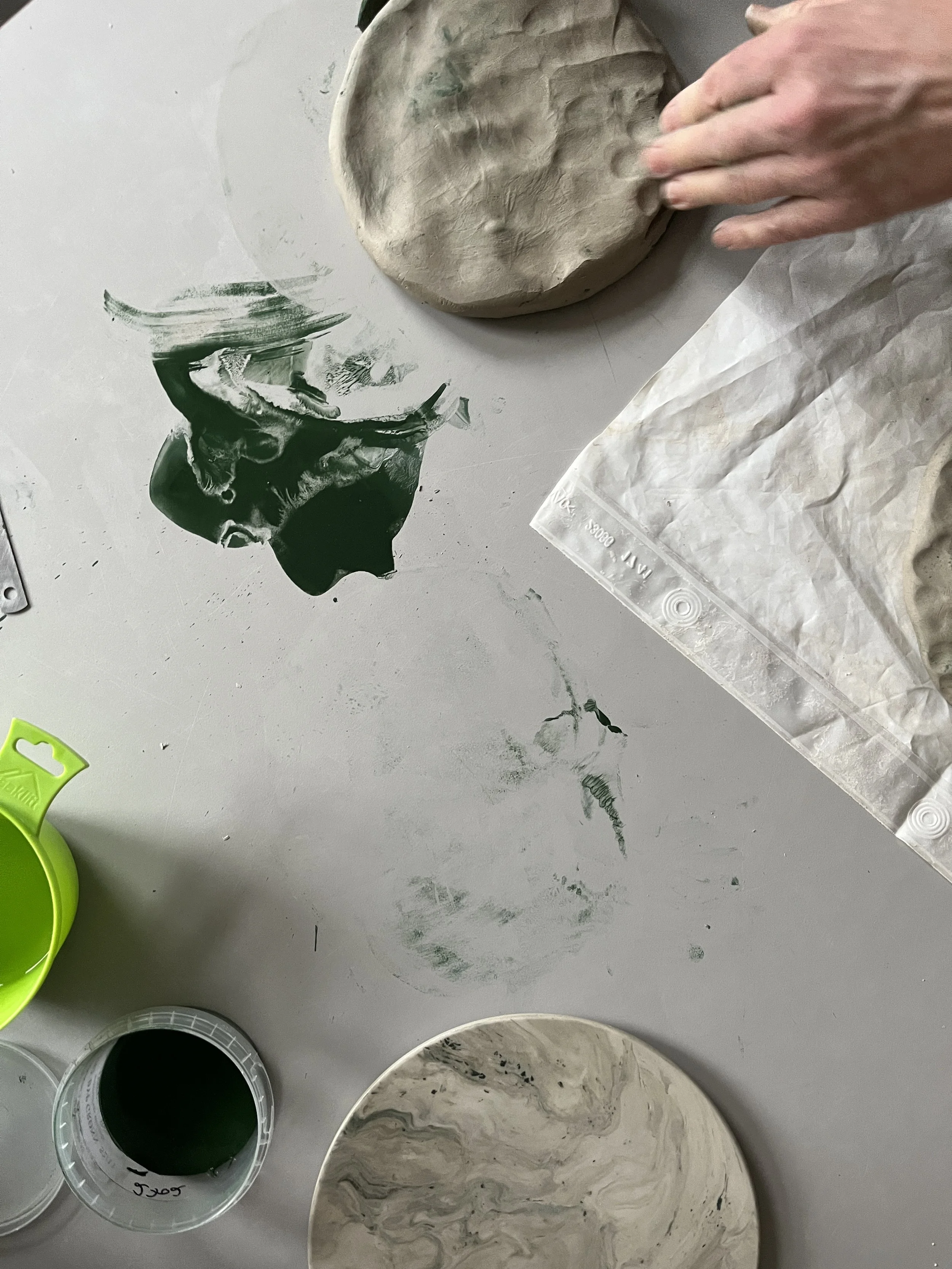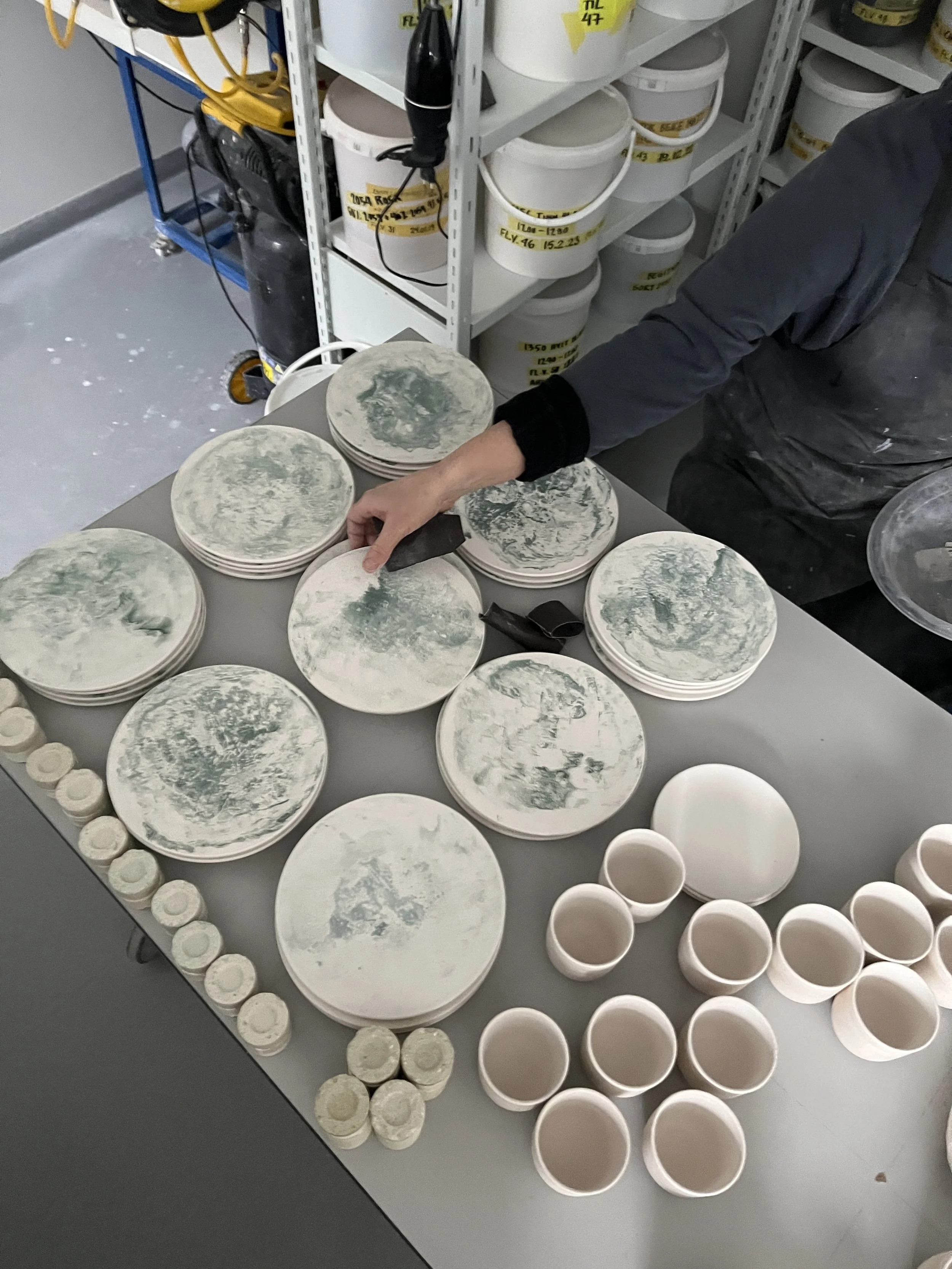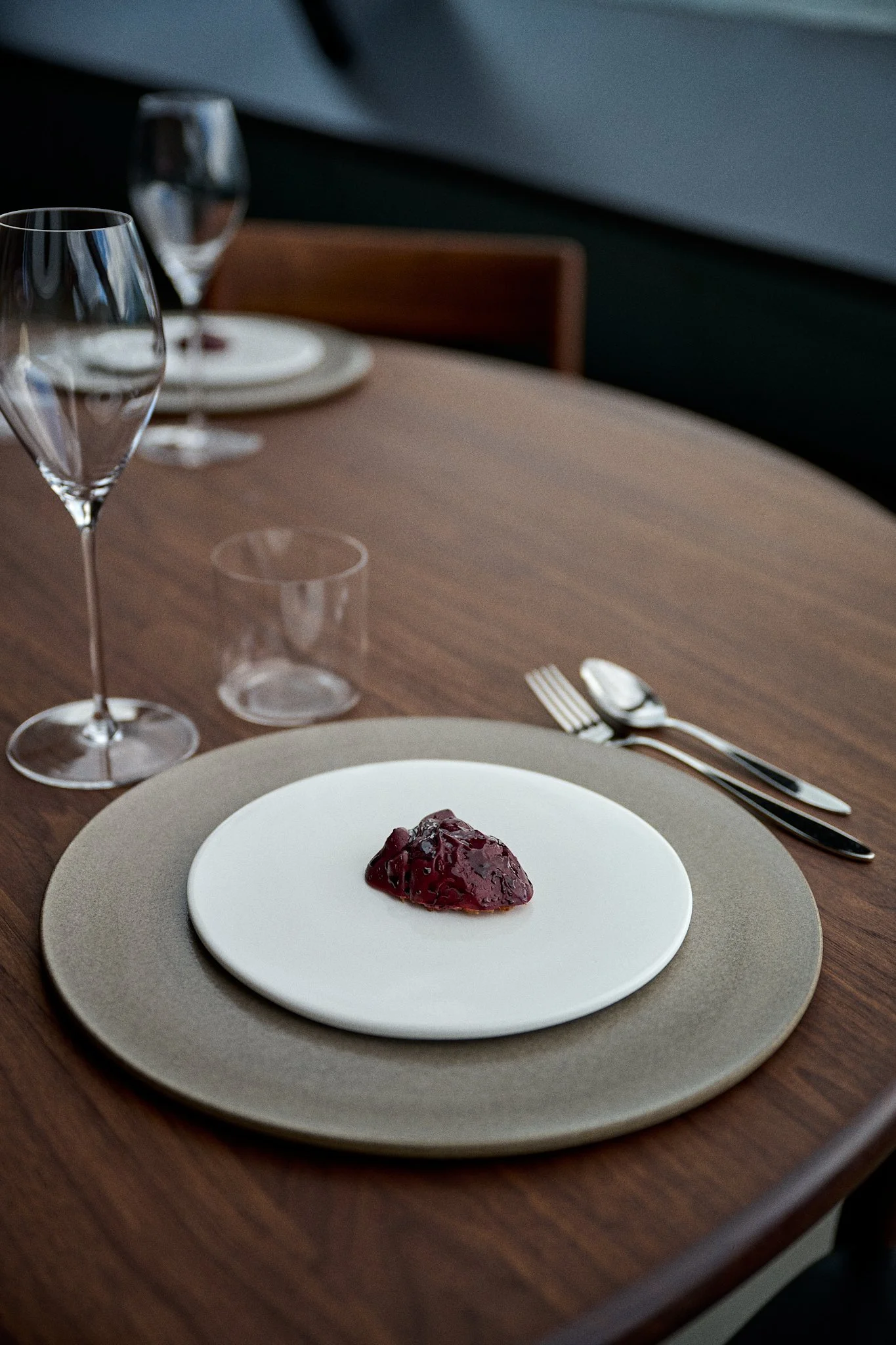Expedition dining.
At the very beginning of 2023 we were contacted by this Danish guy looking for “ceramics for a new restaurant project”. Little did we know that it would lead to one of the most exciting collaborations and intriguing product developments in a long time - for one of the most absurd restaurant locations we have ever heard of! The Iris restaurant is located in a floating art installation called Salmon Eye; a metallic bubble floating in the middle of a Norwegian fiord! The experience starts and ends with a boat trip (or if you wish, a night-time dip in the ocean when back at the pier!) and includes a visit to a boat house on a remote island - hence the term expedition dining.
The Salmon Eye project started with a workshop together with Nico and Anika (head team at Iris), going through the concept of each dish and starting the process of defining the right tableware to match it.
Some dishes were solved with products we already have in our collection, others needed a tweak or an alteration, and some were new developments alltogether.
The first tests for the “Cone of Plenty” dish were made in the shape of the island Snilstveitøy - where the dish is served in an old boat house.
The island Snilstveitøy in map version and in clay version… This plan soon turned out to be too complicated for all involved parties!
The “Cone of Plenty” plan went from island to a simpler round shape with holes that are all carved manually. The plate can be used both ways.
The first dish - “Cone of Plenty” - is served in an old boat house at Snilstveitøy.
Making ceramic plates with a discreet wooden structure and feeling is a tricky task - it has to be done in just the right way to look good. We searched our surroundings for the perfect wood for the purpose; with the pattern and depth we wanted and that could be transferred to plaster production moulds.
Photo Iris / Tobias Torjusen
The “Weeds of the Sea” dish is served in our Mola plate, made from a mix of two different types of clay. This is a challenging production technique with a lot of potential for cracking, but with the right mixing ratio and procedure most problems can be overcome! And it is worth it when the interaction between tableware and the dish is as good as this one! Photo Iris / John Asle Hansen
Those who know Odd Standard well might still not have seen this one coming: a bright white bone china plate. An unusual creation for us, but just the right answer for the “Change of Heart” dish.
The “Change of Heart” dish.
A central character on the table throughout the meal is the grey cover plate. 30 cm wide and almost completely flat, with just a slight edge to make it easier to lift, it blends in perfectly in the interior and on the tables. Photo Iris / Tobias Torjusen
Our ceramic branch Tvigg is used for the “Rosettes” dish. Photo Iris / Tobias Torjusen
The first batch of our soap stone plate Grei was made for Iris and Salmon Eye, to solve the presentation of the dish “Survival”. Photo Iris / Tobias Torjusen
The dish “Feeding the Future” required a special edition of our Karv plate, made with larger and fewer carvings and in a different clay.
Photo Iris / Tobias Torjusen
A long-time Odd Standard development plan finally came to life with the Iris project; a thick and very characteristic glass bowl made from 100% recycled glass. With a look of upset sea, it is the perfect bowl for Iris and Salmon Eye.
The first test of the glass bowl was made from green glass, recycled from old wine bottles, because that is what the glass oven was filled with that day!
Upset sea indeed!


